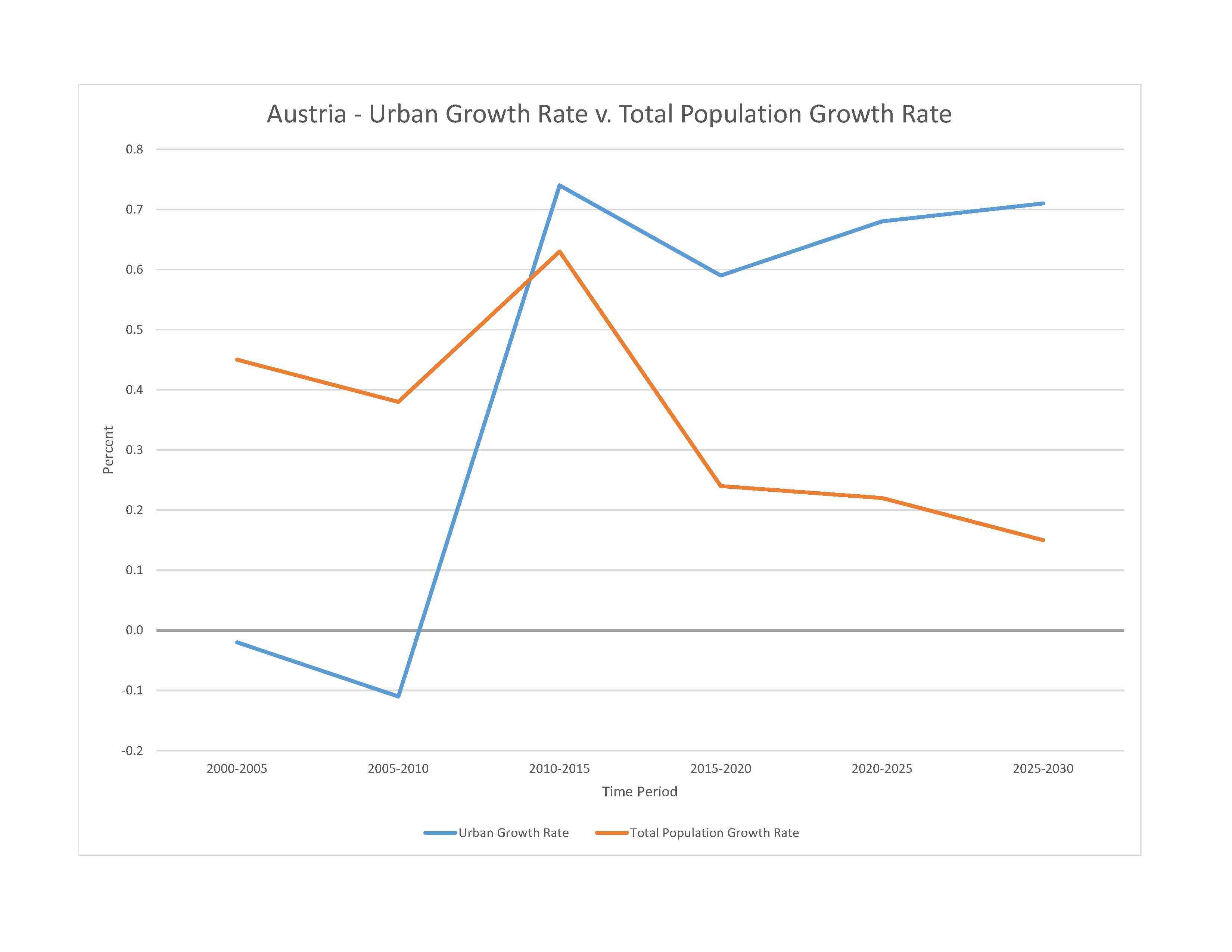
8,940,860 (2023 est.)
noun: Austrian(s)
adjective: Austrian
Austrian 80.8%, German 2.6%, Bosnian and Herzegovinian 1.9%, Turkish 1.8%, Serbian 1.6%, Romanian 1.3%, other 10% (2018 est.)
note: data represent population by country of birth
German (official nationwide) 88.6%, Turkish 2.3%, Serbian 2.2%, Croatian (official in Burgenland) 1.6%, other (includes Slovene, official in southern Carinthia, and Hungarian, official in Burgenland) 5.3% (2001 est.)
major-language sample(s):
Das World Factbook, die unverzichtbare Quelle für grundlegende Informationen. (German)
The World Factbook, the indispensable source for basic information.
German audio sample:
Roman Catholic 55.2%, Muslim 8.3%, Orthodox 4.9%, Evangelical Christian 3.8%, Jewish 0.1%, other 5.4%, none 22.4% (2021 est.)
note: data on Muslim is a 2016 estimate; data on other/none/unspecified are from 2012-2018 estimates
0-14 years: 14.08% (male 645,660/female 613,399)
15-64 years: 65.11% (male 2,914,056/female 2,907,233)
65 years and over: 20.81% (2023 est.) (male 820,022/female 1,040,490)
total dependency ratio: 51.1
youth dependency ratio: 21.7
elderly dependency ratio: 29.4
potential support ratio: 3.4 (2021 est.)
total: 44.8 years (2023 est.)
male: 43.5 years
female: 46.2 years
0.31% (2023 est.)
9.4 births/1,000 population (2023 est.)
9.9 deaths/1,000 population (2023 est.)
3.5 migrant(s)/1,000 population (2023 est.)
the northern and eastern portions of the country are more densely populated; nearly two-thirds of the populace lives in urban areas
urban population: 59.5% of total population (2023)
rate of urbanization: 0.68% annual rate of change (2020-25 est.)

1.975 million VIENNA (capital) (2023)
at birth: 1.05 male(s)/female
0-14 years: 1.05 male(s)/female
15-64 years: 1 male(s)/female
65 years and over: 0.79 male(s)/female
total population: 0.96 male(s)/female (2023 est.)
29.7 years (2020 est.)
5 deaths/100,000 live births (2020 est.)
total: 3.2 deaths/1,000 live births (2023 est.)
male: 3.6 deaths/1,000 live births
female: 2.8 deaths/1,000 live births
total population: 82.5 years (2023 est.)
male: 79.9 years
female: 85.2 years
1.51 children born/woman (2023 est.)
0.74 (2023 est.)
79% (2019)
note: percent of women aged 16-49
improved: urban: 100% of population
rural: 100% of population
total: 100% of population
unimproved: urban: 0% of population
rural: 0% of population
total: 0% of population (2020 est.)
11.5% of GDP (2020)
5.29 physicians/1,000 population (2020)
7.3 beds/1,000 population (2018)
improved: urban: 100% of population
rural: 100% of population
total: 100% of population
unimproved: urban: 0% of population
rural: 0% of population
total: 0% of population (2020 est.)
20.1% (2016)
total: 11.9 liters of pure alcohol (2019 est.)
beer: 6.3 liters of pure alcohol (2019 est.)
wine: 3.7 liters of pure alcohol (2019 est.)
spirits: 1.9 liters of pure alcohol (2019 est.)
other alcohols: 0 liters of pure alcohol (2019 est.)
total: 26.4% (2020 est.)
male: 27.7% (2020 est.)
female: 25% (2020 est.)
N/A
58.7% (2023 est.)
5.1% of GDP (2020 est.)
total population: NA
male: NA
female: NA
total: 16 years
male: 16 years
female: 16 years (2020)
NOTE: The information regarding Austria on this page is re-published from the 2024 World Fact Book of the United States Central Intelligence Agency and other sources. No claims are made regarding the accuracy of Austria 2024 information contained here. All suggestions for corrections of any errors about Austria 2024 should be addressed to the CIA or the source cited on each page.
This page was last modified 04 May 24, Copyright © 2024 ITA all rights reserved.